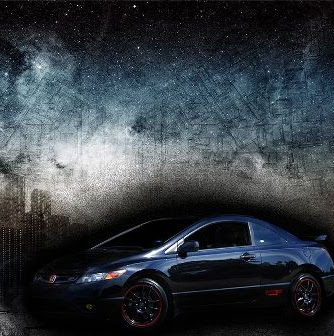Donald E Busch
age ~87
from Crossville, TN
- Also known as:
-
- Don W Busch
- Phone and address:
-
359 Willard Brown Rd, Crossville, TN 38572
9314562673
Donald Busch Phones & Addresses
- 359 Willard Brown Rd, Crossville, TN 38572 • 9314562673
- Hinsdale, IL
- Cumberland Gp, TN
- 359 Willard Brown Rd, Crossville, TN 38572
Work
-
Position:Retired
Specialities
Zoning Law • Land Development • Real Estate • Administrative Law • Local Government Law • Condemnation
Us Patents
-
Ultra Low Friction Carbon/Carbon Composites For Extreme Temperature Applications
view source -
US Patent:62552341, Jul 3, 2001
-
Filed:Dec 17, 1998
-
Appl. No.:9/213551
-
Inventors:Ali Erdemir - Naperville IL
Donald E. Busch - Hinsdale IL
George R. Fenske - Downers Grove IL
Sam Lee - Gardena CA
Gary Shepherd - Los Alamitos CA
Gary J. Pruett - Cypress CA -
Assignee:Hitco Carbon Composites, Inc. - Gardena CA
The University of Chicago - Chicago IL -
International Classification:B32B 2704
-
US Classification:442 97
-
Abstract:A carbon/carbon composite in which a carbon matrix containing a controlled amount of boron or a boron compound is reinforced with carbon fiber exhibits a low coefficient of friction, i. e. , on the order of 0. 04 to 0. 1 at temperatures up to 600. degree. C. , which is one of the lowest frictional coefficients for any type of carbonaceous material, including graphite, glassy carbon, diamond, diamond-like carbon and other forms of carbon material. The high degree of slipperiness of the carbon composite renders it particularly adapted for limiting friction and wear at elevated temperatures such as in seals, bearings, shafts, and flexible joints.
-
Formation Of Thin Walled Ceramic Solid Oxide Fuel Cells
view source -
US Patent:48834971, Nov 28, 1989
-
Filed:Mar 28, 1988
-
Appl. No.:7/174146
-
Inventors:Terry D. Claar - Tisle IL
Donald E. Busch - Hinsdale IL
John J. Picciolo - Lockport IL -
Assignee:Arch Development Corporation - Chicago IL
-
International Classification:H01M 810
-
US Classification:296235
-
Abstract:To reduce thermal stress and improve bonding in a high temperature monolithic solid oxide fuel cell (SOFC), intermediate layers are provided between the SOFC's electrodes and electrolyte which are of different compositions. The intermediate layers are comprised of a blend of some of the materials used in the electrode and electrolyte compositions. Particle size is controlled to reduce problems involving differential shrinkage rates of the various layers when the entire structure is fired at a single temperature, while pore formers are provided in the electrolyte layers to be removed during firing for the formation of desired pores in the electrode layers. Each layer includes a binder in the form of a thermosetting acrylic which during initial processing is cured to provide a self-supporting structure with the ceramic components in the green state. A self-supporting corrugated structure is thus formed prior to firing, which the organic components of the binder and plasticizer removed during firing to provide a high strength, high temperature resistant ceramic structure of low weight and density.
Name / Title
Company / Classification
Phones & Addresses
2215 MEDINA AVE LLC
1097 LORETTA AVE LLC
1005 S CHAMPION AVE LLC
1353 E 15TH AVE LLC
DON JON HOLDINGS LLC
1816 BRENTNELL AVE LLC
2016 BRENTNELL AVE LLC
1828 WOODLAND AVE LLC
Lawyers & Attorneys

Donald Busch - Lawyer
view sourceOffice:
Carnahan, Evans, Cantwell & Brown, P.C.
Specialties:
Zoning Law
Land Development
Real Estate
Administrative Law
Local Government Law
Condemnation
Land Development
Real Estate
Administrative Law
Local Government Law
Condemnation
ISLN:
908641589
Admitted:
1957
University:
University of Missouri, A.B., 1954
Law School:
University of Missouri, J.D., 1957
Resumes

Donald Busch
view sourceYoutube
Myspace

Donald Busch
view sourceBirthday:
1953

Donald Busch
view sourceBirthday:
1947
Googleplus

Donald Busch

Donald Busch
Education:
Liberty University
Tagline:
Loving yourself is living.
Classmates

Donald Thomas Busch
view sourceSchools:
Cuba City High School Cuba City WI 1978-1982

Donald Busch
view sourceSchools:
Erasmus Hall School of Humanities New York NY 1965-1969

Donald Busch
view sourceSchools:
Central Vocational High School Cincinnati OH 1951-1955
Community:
Sharon Roberts, Norman Riddle, Lincoln Day, James Crittenden
Plaxo

H. Donald Busch
view sourcePhiladelphia, PA

Donald Busch
view source1100 Park Place Ste 300
Get Report for Donald E Busch from Crossville, TN, age ~87







